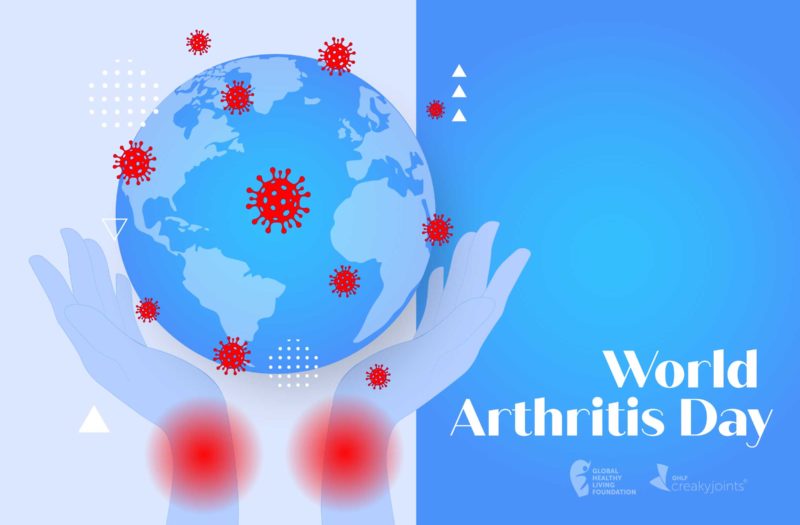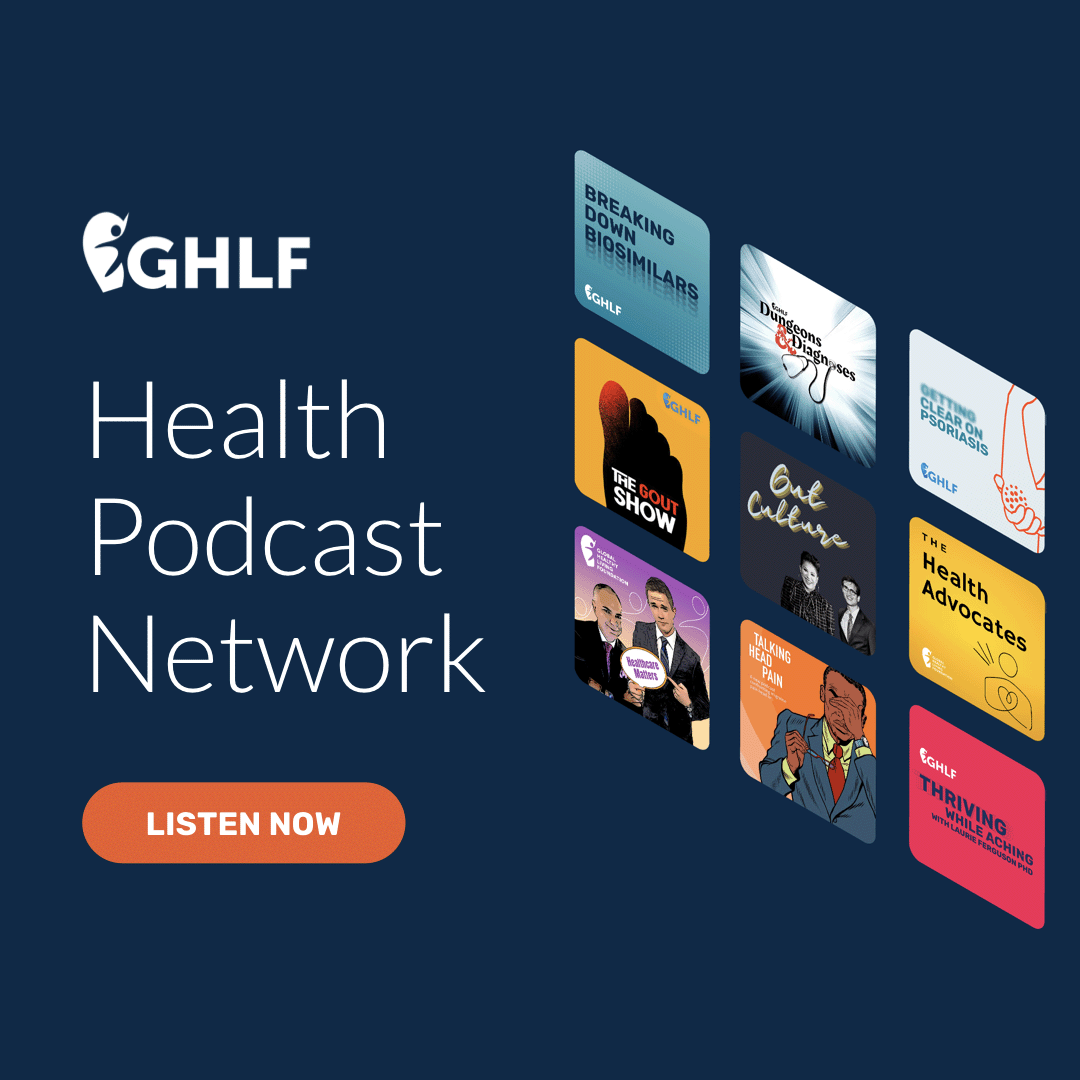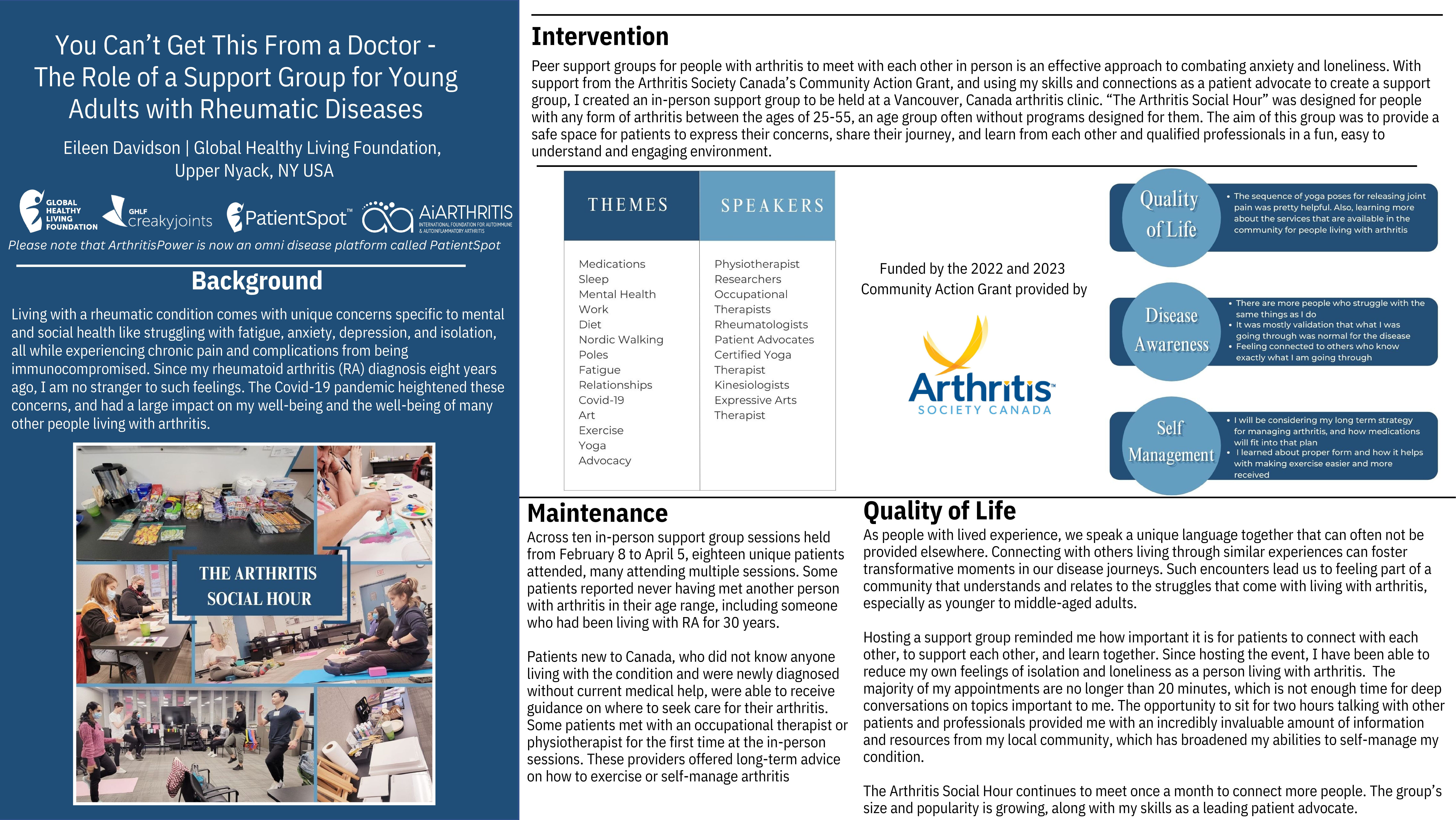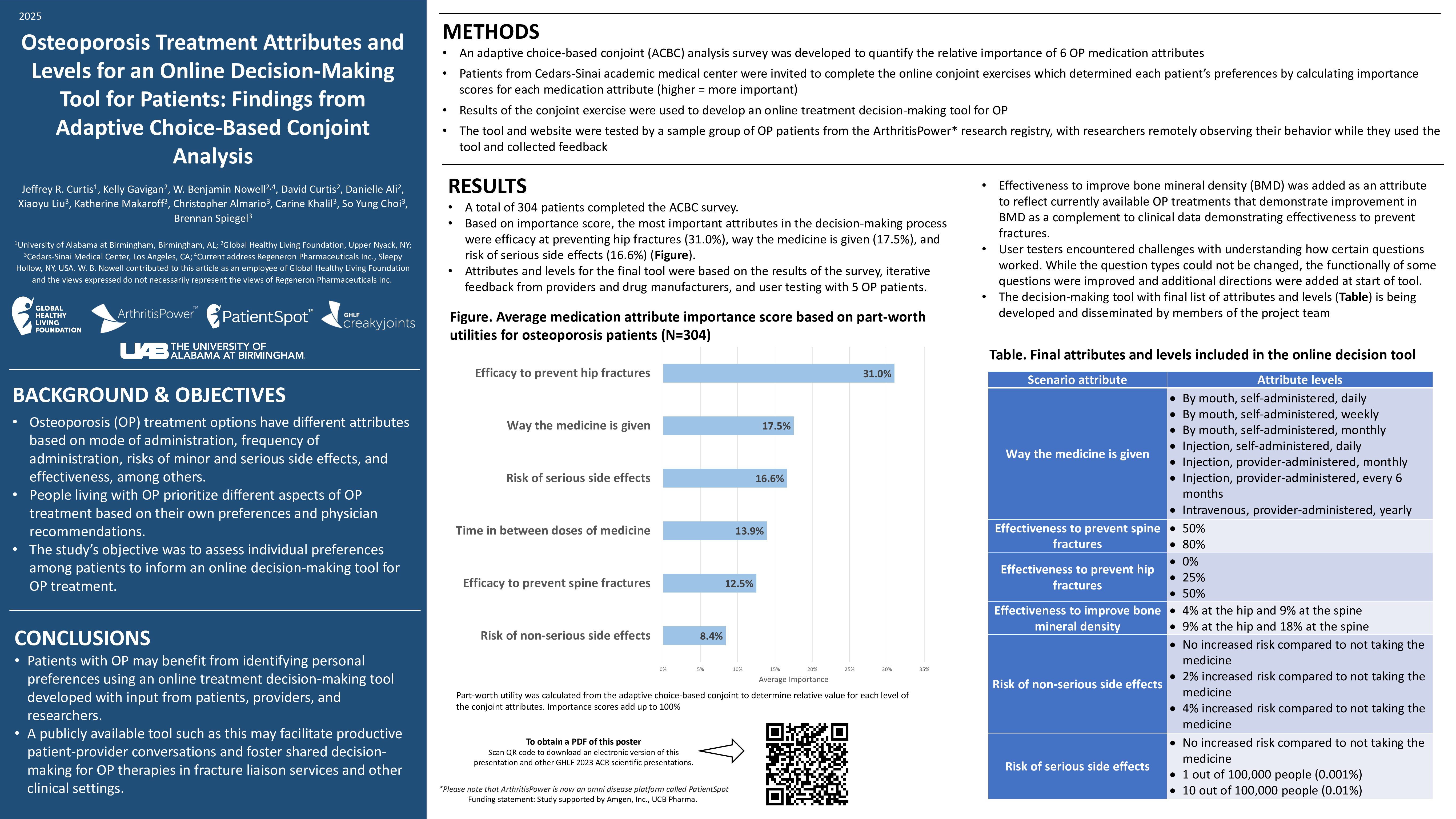Learn more about our FREE COVID-19 Patient Support Program for chronic illness patients and their loved ones.
“Without question, going through this pandemic has been one of the most emotional experiences of my life,” says Joel N., 36, of Norwich, England. He’s had decades of practice managing his arthritis — he was diagnosed with juvenile arthritis at 11 years old but over the years it has more often presented as psoriatic arthritis — yet even he was caught off guard this spring. “I was unwell when lockdown kicked in and was receiving a lot of medical support, and a lot of that was instantly taken away.”
How Joel is experiencing this pandemic is unique but it’s also something that many people with arthritis and other chronic illnesses can relate to.
The COVID-19 pandemic has had a huge effect, mentally and physically, on this already vulnerable group of people, says Amanda Fialk. PhD, LCSW, an adjunct professor at Wurzweiler School of Social Work at Yeshiva University in New York City and chief of clinical services at The Dorm. There are a lot of factors that go into how someone with a chronic illness has been (and continues to be) affected by the pandemic, including where they live; changes in their medical care; stress around government policies and political, national, or global issues; increased loneliness, isolation, anxiety, and depression; access to support systems; and fears about the virus itself, she says.
The pandemic is, of course, worldwide. While these factors are similar around the globe, they may play out differently from country to country — or not. Even though each nation’s experience with and response to COVID has been different, people in the global chronic illness community continue to have many shared experiences throughout the pandemic.
As we reflect on our community on World Arthritis Day, we talked to people with arthritis all over the world about how they’ve been experiencing the pandemic. We hope these insights help all of us maintain a global perspective and empathy and understanding about what we’re all going through together right now.
Concerns About Arthritis
My condition deteriorated quickly
Going into strict lockdown meant Joel, from the U.K., was unable to go on his daily dog walks or to his physical therapy and other support appointments. “I was already unwell but my condition deteriorated quickly,” he says. “I went from being in pain but mobile in February to on crutches by April.”
My pain has gotten worse
“I live in Ontario, Canada and we’ve had strict rules about social distancing so I haven’t been able to walk outside much. Not being able to do my usual exercise has really increased my pain,” says Jen J., 56, who has osteoarthritis in her knees, toes, and shoulders. “The pain is constant and annoying.”
Stress has a big impact on our health
Rheumatoid arthritis patient Cecilia, 45, in Chile, says the pandemic made her realize how much stress can contribute to fatigue and other arthritis symptoms. Like other people arthritis, she says the impact of moving less while lockdown has also negatively impacted her health. “We really need to put our bodies in movement again,” she says.
Read more about Cecilia’s experience during the pandemic in our ‘COVID-19 Time Capsule’ project.
My flares have actually gotten better
While many arthritis patients have been reporting increases in pain, flares, and other symptoms, some people have had the opposite experience. “I have experienced only mild flares, maybe because I have been resting more,” says Padiki N., 31, from Ghana, who has lupus. “The positive side of the pandemic.”
Read more about Padiki’s experience during the pandemic in our ‘COVID-19 Time Capsule’ project.
I stopped one of my medications
“I have rheumatoid arthritis so my immune system is already in trouble, then I take Enbrel [etanercept] and sulfasalazine to manage it. Enbrel is a biologic so it suppresses my immune system,” says Camilla T., 22, of South Africa. “My doctor told me I could not take it during the pandemic. Even though we have few cases here, he said the risk is too much.” Not being able to take all of her medications has made her symptoms worse, she says.
*A note from CreakyJoints: Guidance from the American College of Rheumatology, the European League Against Rheumatism, and other international organizations recommend that most patients who are not infected with COVID-19 remain on their usual medications unless otherwise advised by their doctor. You can read more about the ACR’s guidance here.
I haven’t been using my normal painkillers
Ibuprofen was a go-to medication for fibromyalgia pain for Japhet A. in the Philippines. That is, until the pandemic hit. “I can no longer take these types of pain relievers because as we heard on the news, ibuprofen can worsen COVID symptoms if you get it and you’re asymptomatic,” she says.
*A note from CreakyJoints: While some initial research suggested that medications like ibuprofen could make COVID symptoms worse, more recent data indicates there is no evidence that ibuprofen worsens COVID-19 outcomes.
My mental health has gotten worse
“The more days that go by without being able to see my doctors, the more paranoid and anxious I feel,” Japhet says. This is particularly concerning as chronic pain conditions and mental health are strongly connected. The extra worry and fear caused by the pandemic can trigger painful flare-ups, then the pain causes more panic.
It’s been bumpy
Eileen D., 34, who lives with rheumatoid arthritis in Canada, notes that living with chronic illness is always bumpy, and the pandemic has been no exception. “The stress and sedentary lifestyle of the pandemic has led to more pain, fatigue, depression, and anxiety, she says, lamenting that she’s experienced some weight gain from not being as active and bored. “It really is a painful time.”
Read more about Eileen’s experience during the pandemic in our ‘COVID-19 Time Capsule’ project.
I couldn’t tell what was COVID and what was arthritis
Steffen S., 28, of Germany was infected with COVID-19 but didn’t know that was what it was until his girlfriend was diagnosed and he got tested too. “At first I thought it was just a flare of my ankylosing spondylitis. Chest pain is very common for me,” he says. It was only when his partner became ill with symptoms that he had second thoughts. “It was confirmed by my doctor that I realised it wasn’t a flare,” he says, adding that he feels lucky that tests in Germany are easy and free to get.
It took much longer to recover than I thought
Steffen’s original symptoms — chest pain, difficulty breathing, a cough, and a fever —disappeared on their own within a couple of weeks of resting at home. But COVID wasn’t done with him yet. “I got it in April and I did not feel all better until the end of June,” he says. Despite his symptoms being relatively mild, he says he experienced extreme fatigue and body pain for months afterward. “I do not know if the virus triggered my arthritis or if it was the virus itself causing all that,” he adds.
I’m struggling with insomnia
Between worries about the pandemic and increased pain from not being able to take her usual medication, Camilla, of South Africa, says her quality of life has been extremely impacted —especially her sleep. “All night I can’t sleep and am waking,” she says. “The next day I am very tired and I have a hard time at work. My husband is very worried and has been giving me herbal tinctures that help a little.” Getting good sleep is one of the best things you can do to manage inflammatory arthritis and so she worries that this will make her disease progress more and faster. Read more here about the interplay of COVID-somnia and painsomnia.
Getting around is a little easier
It’s important to appreciate the little upsides when we can. One thing that Sheryl C., a lupus patient from Singapore, noticed: Less-crowded streets make it easier to get around when you have chronic pain. “Actually, it’s been a bit better during pandemic as the streets are emptier, making it easier to navigate for me,” she says.
Read more about Sheryl’s experience during the pandemic in our ‘COVID-19 Time Capsule’ project.
Getting Medical Care
I feel medically unsupported
There was one week where Joel says he had five medical appointments cancelled, one of which he’d waited 30 weeks for. “I’d been on a waiting list for months to see a pain management specialist and finally got an appointment, only for it to get cancelled one week before it was scheduled,” he says. “That was one of my lowest points. It was the moment where it really sunk in how medically unsupported I would be during this pandemic.”
Telehealth appointments are not the same
Online medical checkups are better than no checkups but they’re a sorry second to real, in-person appointments, says Calum S., 33, of the U.K., who’s had juvenile arthritis since he was 2 years old. “Not being able to have face-to-face hospital appointments is really annoying. I find it really helpful to show the doctors which joints are swollen and by how much rather than just tell them,” he says.
The pandemic interrupted my diagnosis
Courtney S., 30, from Queensland, Australia had been experiencing arthritis symptoms since 2015 but endured years of misdiagnoses before a gastroenterologist finally linked her joint symptoms to an autoimmune issue. In 2019 she was given a preliminary diagnosis of inflammatory arthritis and referred to a specialist. “I was finally able to see a rheumatologist in February 2020, and had just started treatment, including starting a whole heap of new prescription medications. The doctor also referred me out to a lot of other health professionals who would be able to help me. I was so hopeful,” she says. Then the pandemic hit and those appointments were either cancelled or waitlisted, leaving her hanging with no formal diagnosis and no treatment plan. “I expect it to be changed to seronegative rheumatoid arthritis later this month, when I can finally get in to see a doctor again,” she says.
Having good health care when I was sick was reassuring
“I’d been quite worried about the virus because everybody said it would be worse for me with my disease. But once I had it, it was not so bad for me,” says Steffen, from Germany. “It was very uncomfortable, but I never thought I would die. Fortunately, I wasn’t hospitalised.” He adds that his doctors were very helpful and that he didn’t have to pay anything for COVID care. He says that if he had needed more care, he is confident that he would have been able to get what he needed through his country’s health care system.
It’s been harder to get some medical supplies
Like many countries, Germany experienced some shortages of masks and other PPE at the beginning of the outbreak. This made it frustrating for Steffen, who says he was unable to get some of the medical supplies for his arthritis that he was used to being able to get. “I often wear a [disposable surgical] mask during the wintertime but this year they were impossible to find,” he says. Another issue was a temporary shortage of paracetamol (Tylenol or acetaminophen) at the beginning of the pandemic. However, both are in plentiful supply now, he says.
Daily Life Changes
It’s been a lot tougher to shop and run errands
“I’m currently on two lots of immunosuppressant medication, which means I’m more vulnerable to getting any kind of sickness,” says Calum of the U.K. Since the pandemic started, he’s had to alter his normal shopping patterns and is much more limited in what he can do in public. “I have to be very careful about where I go and at what times,” he says. “For me it’s been difficult not going shopping whenever I want because of how busy it is and how many people don’t wear masks.”
I’ve had to really limit my activities
Because she is not currently able to visit her doctors or have regular checkups, Japhet, of the Philippines, says she has to make modifications to her lifestyle to reduce the risk of flare-ups. “I do my best to take care of myself and have to do less strenuous activities to reduce my symptoms on my own,” she says. However, this severely limits what she can do in a day and is much less than what she was able to do before the pandemic.
It’s brought my husband and I closer together
As part of her self-care, Japhet discovered that regular massages significantly help her joint pain. During the pandemic, her husband has jumped in as her massage therapist. “Now that it is cold season here in the Philippines, I spend more time on body massage every day to ensure that my joints are okay,” she says. “My husband massages me daily.”
Extra cleaning means extra pain
“I am super-worried about getting COVID so we stay at home as much as possible. Once or twice a month my husband has to leave the house for groceries and meds,” Japhet says. But even that adds complications. “I have to clean all those and it takes five to seven hours, leaving me with sore and painful body pains for days,” she says.
I’ve altered my diet
Before the pandemic, Japhet tried to eat a good diet but felt okay indulging in her favorite treats occasionally. Now she feels like she can’t take that risk. “There are foods that trigger my chronic pain that now I can’t eat because I don’t take pain relievers,” she says.
We’re eating more home-grown foods
“Our biggest change for 2020 was investing more time in the vegetable garden,” says Kasey G., 37, from Brisbane, Australia. She has rheumatoid arthritis. “We’re now eating home-grown rocket [arugula], spinach, and tomatoes most days, with more crops expected soon.”
Read more about Kasey’s experience during the pandemic in our ‘COVID-19 Time Capsule’ project.
I miss my friends
Camilla, has a big support system of friends and family in Johannesburg, South Africa, but because of her increased risk of getting sick, she’s been avoiding in-person gatherings for months. “They have always been there for me, but FaceTime is not the same,” she says. “I miss them terribly. I cry often for them.” In addition, she says seeing pictures of them on social media getting together without her makes it even more painful. “I want them to be happy and live their lives still but I want to be with them.”
My mother lives with us now
One family member Camilla doesn’t have to miss is her mother, who decided to move in with them during the pandemic. “My husband and I are newlyweds so we would like this time to ourselves and our apartment is small. But it’s a good thing because she helps do all the things I cannot do because of my arthritis, like go to the shops,” she says, adding that in South Africa it’s not uncommon for a parent to move in with their adult children.
It’s forced me to slow down and take care of myself
While there’s been plenty of challenging things about the pandemic for Simon S., 27, of Manchester, England, who lives with psoriatic juvenile idiopathic arthritis, he says one notable change is that it’s made him think more about looking after himself. “The pandemic has, in one sense, enabled me to reset myself, and adjust my way of life,” he says. “I have learned to slow down and think more about looking after myself. I have made time to self-care. I even made the time to transform my garden, which is something I have been trying to do for a while, but just never had the time.”
Read more about Simon’s experience during the pandemic in our ‘COVID-19 Time Capsule’ project.
Big Life Changes
I felt like a failure as a parent
Joel’s rapid disease progression made it difficult to care for his 18-month-old child while his wife was working around the clock. “It was the darkest few weeks of my life. My mental health suffered, I had no hope or end in sight, I felt inferior as a parent. You plan for family life with a chronic illness but I couldn’t have planned for the sudden deterioration in my health with NO hospital support or treatment,” he says. “It was the first time in my life I have felt disadvantaged or ‘second class’ because of my health.”
It’s changed my family planning
Camilla and her husband would like to start having children but she says they’ve decided to put it off since the pandemic started. “It’s a sad thing for us but my health is too uncertain. My doctor said the priority needs to be getting my RA under control before getting pregnant and we can’t do that without being able to take all my medications,” she says. “It feels like one more thing I’ve lost to the pandemic.”
It’s challenging to be an essential worker when you have underlying health issues
Courtney, from Australia, works in child protection, which the government classified as a frontline essential worker. This meant that she needed to keep working through the pandemic. However, they didn’t offer her modifications for her health situation, leaving that up to her employer, who had no idea what to do either. “I work with a population who often don’t take care of their health, which puts me at an even higher risk and that has presented a range of challenges for my employer,” she says. All of this leaves her feeling vulnerable both in her employment situation and with her health.
My children have lost their government-provided services
In Canada, two of Jen’s adult children have autism and it’s been a struggle to get them to wear masks and take other precautions. “Most of their support systems and services have been shut down because of the pandemic, and that is very tough on them and me,” she says.
How Countries Have Been Handling the Pandemic
‘Shielding’ was great… while it lasted
At the beginning of the pandemic, the U.K. government implemented a program to protect people who were deemed “clinically extremely vulnerable,” called “shielding.” These people, including Joel, would receive extra support so they could take maximum precautions against the virus. “I thought shielding was a great idea. It identified us as at-risk and gave us the help we needed whilst locked in our homes by delivering meds, doing food shopping, etc. Unfortunately, even though the virus was still a serious threat, the government deemed the program no longer necessary starting August 1. “When we realised it was being ended with no handover, no support, I was devastated. The 31st of July wasn’t ‘safe’ but from the 1st of August vulnerable people were expected back in their offices, to work in supermarkets, and go back to life like normal? To end it overnight with no handover or support was absurd and devastating,” he says. “That was the moment the government lost my support.”
COVID-19 education is lessening
At the beginning of the pandemic, Joel says the U.K.’s information about the virus was good and helpful for him. Unfortunately, as the weeks and months have dragged on and people tired of hearing about it, the education around the threat of the virus has really tapered off, he says.
I’m not confident in my government’s ability to handle the pandemic
“I don’t think my country has done a good job during this pandemic,” Japhet says. “The Philippines is in the top 20 for most cases of coronavirus at the moment.” With over 109 million people but only 4 million COVID tests performed, it’s hard to get an accurate picture of what’s really happening. Not having good information, fearing it will get worse, and no end in sight is taking a toll on her mentally and physically.
Lockdown ended too soon
When it comes to staying safe and protecting herself and others from the virus, Jen, from Canada, says that she does feel like the initial quarantine and lockdown procedures were effective. Unfortunately, they didn’t last long enough. “I still think that is the most effective thing that we can do,” she says.
There is a lot of misinformation
There are far fewer deaths of COVID-19 in South Africa than experts had predicted and while scientists continue to study why this is the case, that hasn’t stopped communities from coming up with wild theories and selling unproven preventatives or remedies, Camilla says. “Our government has been very, very bad about telling us the proper information and so people share false facts and charge a lot for bottles of who knows what,” she says. As cases continue to increase (South Africa is currently in the top 10), she worries more about the effects of these rumors.
My government is doing a great job
Steffen, on the other hand, reports feeling safer in Germany, saying his government acted quickly to contain and treat COVID-19. “I feel very lucky to live in Germany. We can get tests and treatments quickly and we are updated regularly about what we should do,” he says. One factor that helps is the German culture of abiding by rules, he says. “We are not fighting our government about this; we wear our masks.”
Strict rules have helped keep us safe
In Singapore, implementing strict rules has kept case numbers low. “Now it’s maximum of five people in restaurants, bars, and home visits,” Sheryl says. “They also give out free masks, and it’s compulsory by law to wear them otherwise you get fined, jailed, or sent home if you’re a foreigner.”
Social restrictions and bans have worked
Similarly, Padiki in Ghana says, “I feel the government’s response to the pandemic has been good,” adding that early in the pandemic, after the first two confirmed cases, the president “implemented social restrictions, banning all public gatherings and closing down all schools and universities. There was a partial lockdown of some of the major cities in the country.” She notes that wearing face masks has been made mandatory in public places where it may be difficult to maintain social distancing and “a new executive instrument has been put in place to punish people who fail to wear one in public.”
Low case numbers have kept life pretty normal
In New Zealand, Alice J., 31, who lives with ankylosing spondylitis, says community transmission of COVID has basically been eliminated so far. “I think here in New Zealand, public recognition of how COVID could affect people with pre-existing conditions has been quite high, and the lockdown rules were very well adhered to across the whole country,” she says. “I am not personally worried about living life quite normally now our lockdown has lifted.”
Read more about Alice’s experience during the pandemic in our ‘COVID-19 Time Capsule’ project.
Fears About COVID
I’m married to a nurse who’s at a high risk for bringing COVID home
In the beginning of the pandemic, at the same time as Joel’s doctors were drilling into him that he could be at risk for complications if he were to get COVID 19, he was living with his wife, who is a nurse in a hospital. “With her job, the threat was ever-present,” he says. “In the first few weeks, I was scared to hug or kiss her after work. It was a terrible thing.”
I feel like I can’t protect myself now
When shielding in the U.K. ended, Joel and his wife had to put their son in daycare and return to work, putting him at risk of being exposed to the virus. “I get a lot of infections from being on biologics therapy, around six to eight a year, but I didn’t have a single cold or infection through the five months of shielding,” he says. “When it ended in the beginning of August, I was in bed sick with a sinus infection three weeks later, and over a month later, I am still off work. This is why the threat of a deadly virus is so very real for people like me.”
I’m already dreading winter
Jen doesn’t see the situation improving for Canadians any time soon and she’s already concerned about how she’ll be able to take care of herself without taking too many risks with the virus. “Winter is going to be very tough for me as I won’t be able to go out walking at all in the outdoors, most of our recreation facilities are closed, and I don’t trust malls and other public spaces to be safe for me to walk in,” she says.
I have nightmares about getting sick
Having suffered a severe fever illness as a child, Camilla says she remembers days of agonizing pain and is terrified of experiencing that again. “When I heard the first symptom of COVID-19 was a fever, I became very scared,” she says. “I would do anything to avoid that kind of pain. I have nightmares still about that time where I wake up in a sweat.”
I’m nervous when my family members run errands
Padiki has been able to work from her home in Ghana, which has helped reduce a lot of fears about coming into contact with infected people at work or while commuting. And even though she’s staying home as much as possible, she has a lot of concerns about her family members’ health and safety. “I am constantly worried when family members have to get groceries for the house. Even though they wear their face mask and practice good hand hygiene, social distancing is a bit difficult in our marketplaces,” she says.
How Others View Chronic Illness and Disability
Empathy toward the immunocompromised is missing
A common frustration for people living with arthritis worldwide seems to be the lack of care shown by others in society. “I recently had an argument with a colleague at work who refused to wear a mask during a staff meeting even after I explained I’m on immunosuppressive medications,” Calum says. “She said, ‘Don’t worry, you won’t get it bad because you are young.’ It makes you see people in a much different way when you realize how little regard they have for your safety and well-being.”
There’s been more education around ‘immunosuppressant medication’
On the other hand, Sheryl from Singapore feels that the pandemic has helped increase education about the fact that “arthritis” is not just wear-and-tear osteoarthritis. “Many patients take immunosuppressants to control the disease. This lowers their immunity and therefore you need to be more careful and considerate around them,” she says.
It helped my family understand my struggle more
“Having my mother live with us has shown her how much my arthritis hurts me,” Camilla says. Not that her mother was unsympathetic before, but Camilla says there was an underlying attitude of “don’t be weak; push through the pain” from her family. “Now she sees my swollen joints, she sees what I can and cannot do,” says Camilla. “It has brought us closer. She tells my aunties to leave me alone now.”
The pandemic gave people a taste of my life
“When most of the country was in lockdown, I felt like it gave people a window into my world and what it’s like living with a chronic illness,” Joel says. “Like the fact that we can’t go out when we want, or shop when we want; all of our daily activities are dictated by our health. I felt like it was a huge step forward in terms of understanding of disability and gave me an opportunity to start conversations whilst people could relate to a restricted lifestyle.”
Get Free Coronavirus Support for Chronic Illness Patients
Join the Global Healthy Living Foundation’s free COVID-19 Support Program for chronic illness patients and their families. We will be providing updated information, community support, and other resources tailored specifically to your health and safety. Join now.












